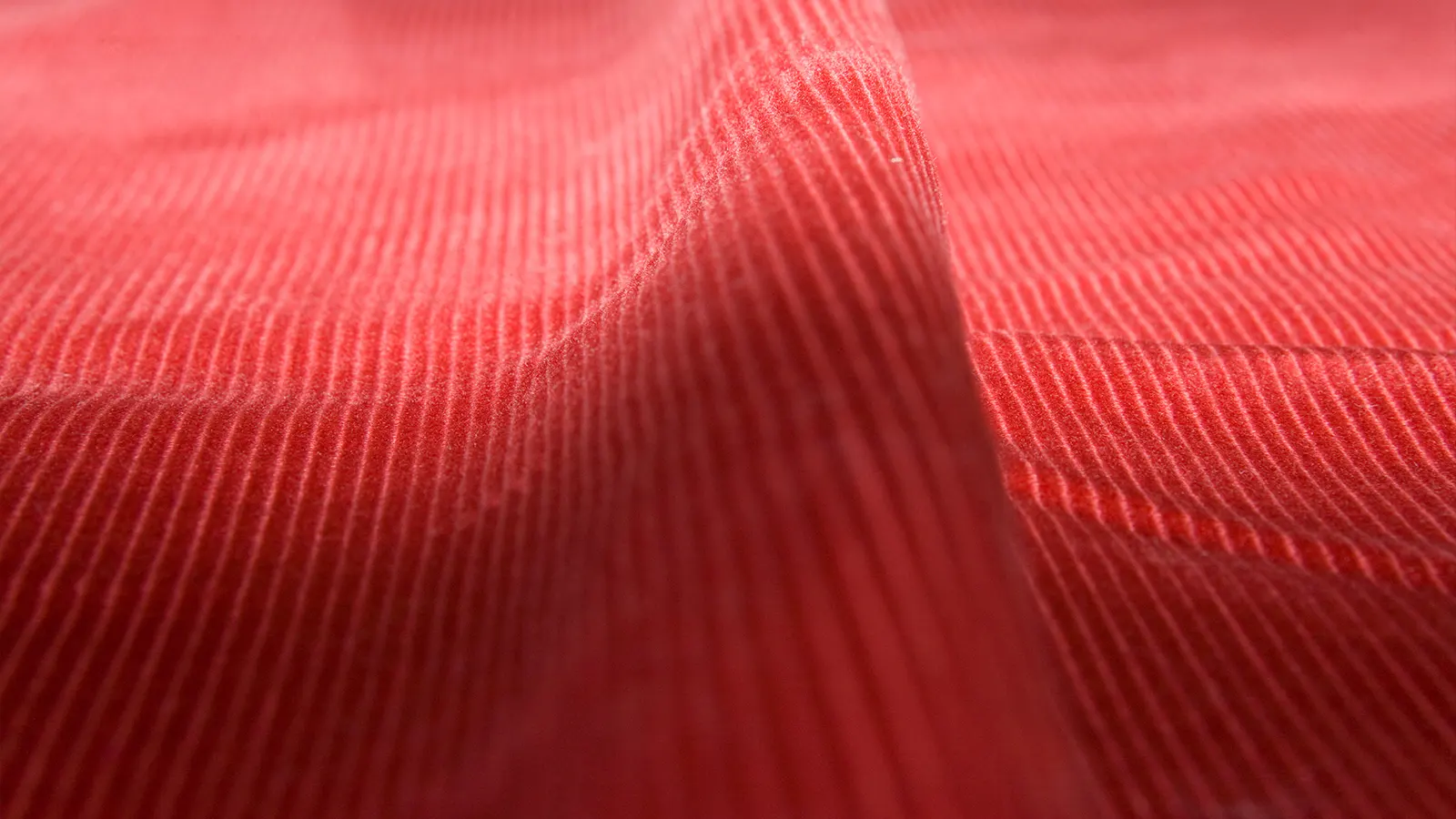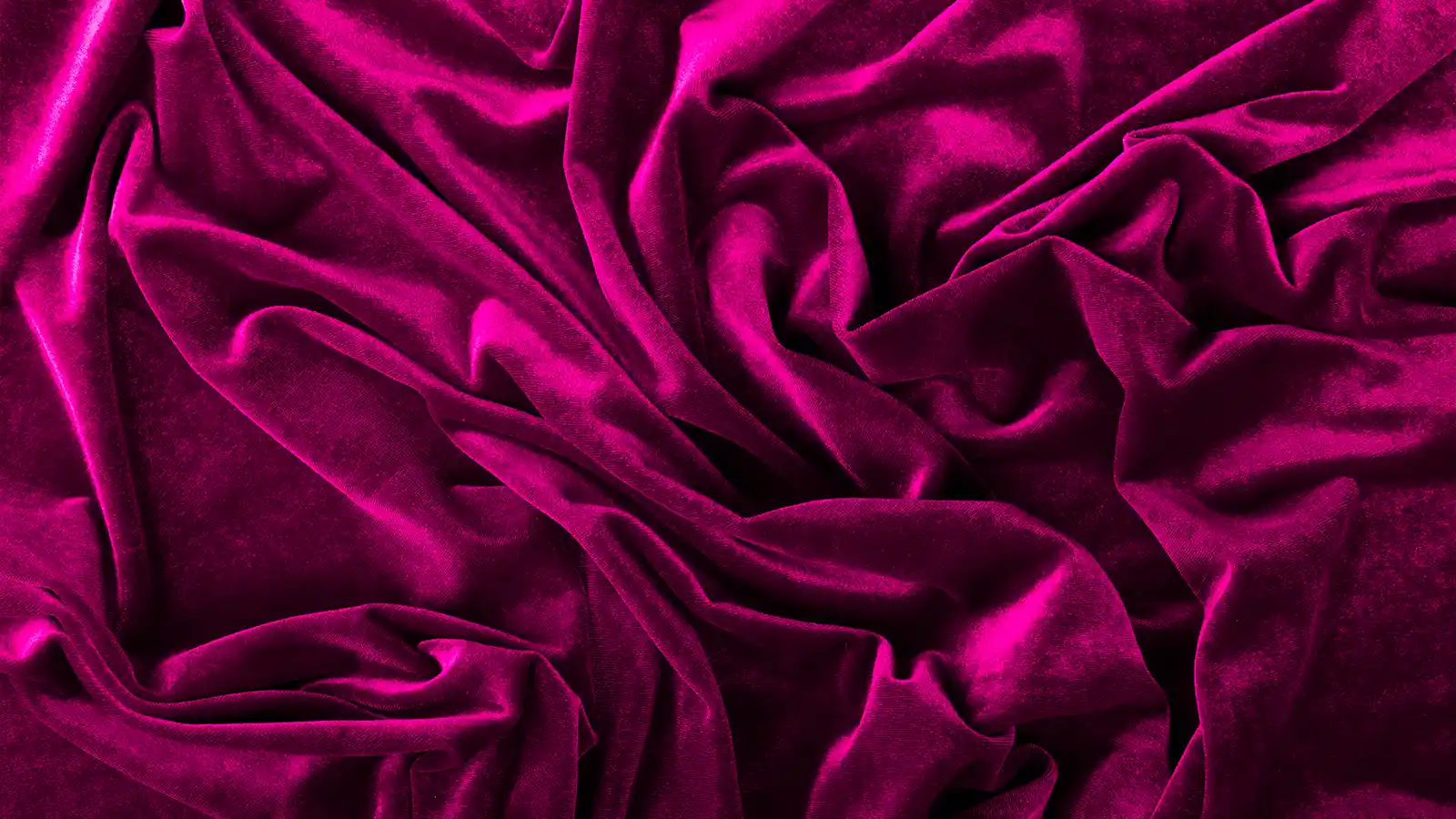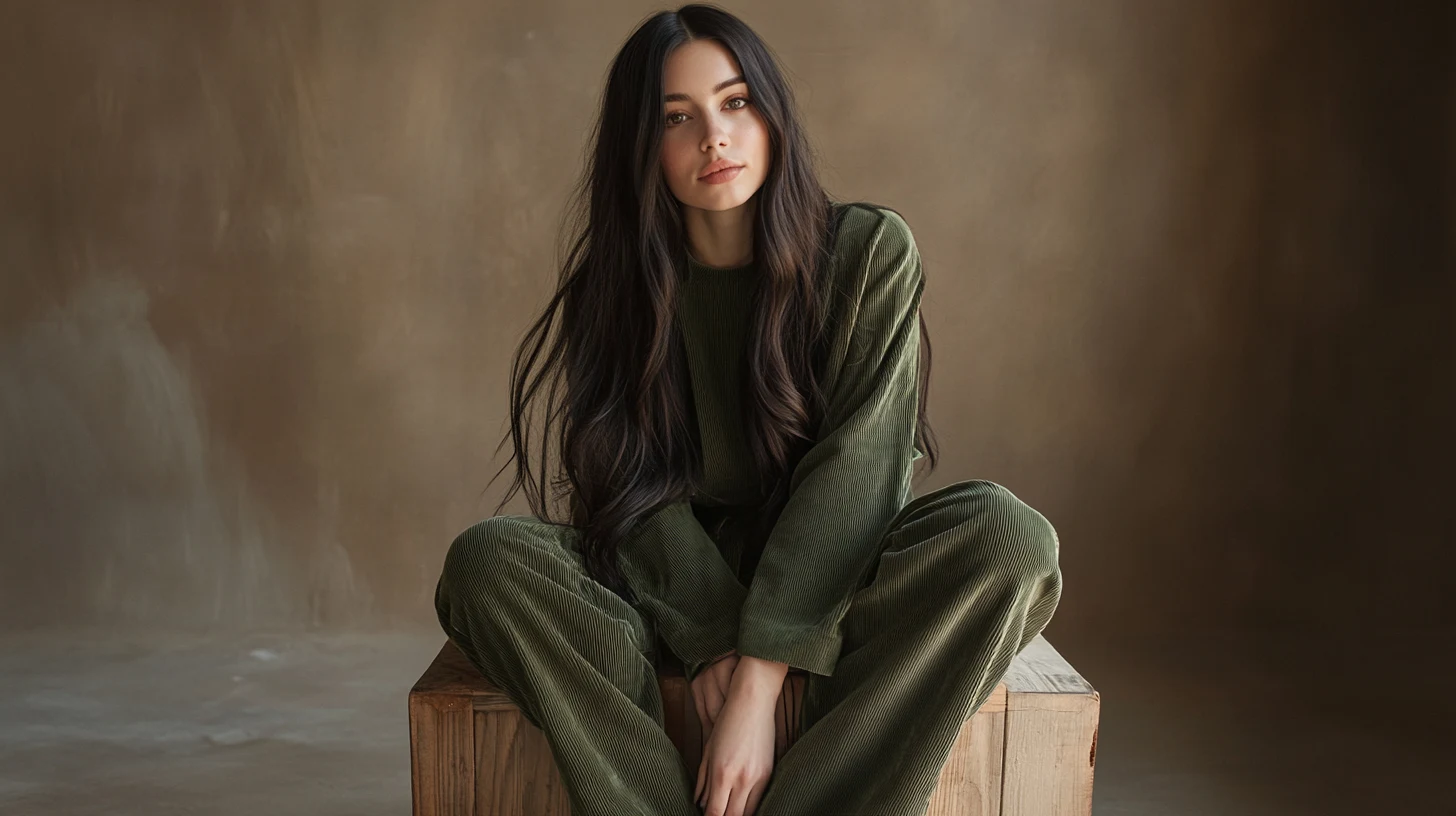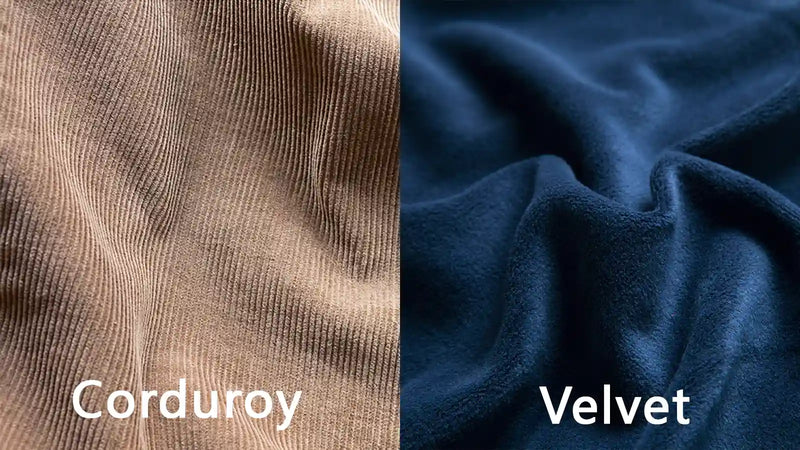When choosing between corduroy and velvet, you're stepping into a rich history of fabric innovation and style evolution.
Corduroy's ribbed texture and rugged durability make it a staple for casual and outdoor wear, perfect for adding a touch of vintage charm to your wardrobe. On the other hand, velvet's smooth, luxurious feel is synonymous with elegance and is often reserved for more formal settings.
But which fabric truly stands out in terms of versatility, cost, and care? Let's explore the nuances that set these two materials apart.
Key Takeaways
- Corduroy is durable and ideal for casual, everyday wear. Velvet offers a luxurious look that is perfect for formal occasions.
- Corduroy is primarily cotton and features a ribbed texture. Velvet has a smooth, dense pile made from various materials.
- Corduroy is typically more affordable, while velvet can cost between $10 and $100 per yard.
- Corduroy is easier to maintain, while velvet requires professional dry cleaning and careful handling.
Corduroy Vs Velvet: Historical Background

When you look at the origins of corduroy and velvet, you'll find rich histories that highlight their unique qualities.
Corduroy
Corduroy, with its roots tracing back to Al-Fustat, Egypt, around the 3rd century BC, has a rich and regal history.
Corduroy, made primarily from cotton, was initially favored by royalty for its durable fabric, which features distinctive wale patterns. It transitioned from royal hunting attire to popular casual wear.
Today, it's cherished for its versatility in trousers, jackets, and upholstery.
Velvet
Moving from the durable appeal of corduroy, velvet's historical background offers a contrasting narrative steeped in opulence.
Originating in the Far East and brought to Europe by Venetian merchants, velvet quickly symbolized nobility. This luxurious, soft, and smooth fabric was traditionally silk but now includes cotton and polyester.
Its rich texture and reflective quality make it ideal for evening wear and formal settings.
Corduroy Vs Velvet: Material Composition

When comparing corduroy and velvet, you'll notice distinct differences in their material composition.
Corduroy
With its distinctive ribbed texture, corduroy stands out thanks to its unique material composition.
Corduroy is primarily made from cotton and features raised ridges that vary in thickness. This design enhances its durability and provides warmth for fall and winter wear.
Velvet
Velvet, a woven fabric, is renowned for its luxurious texture and rich visual appeal.
Cutting loops of yarn creates its dense pile, resulting in a soft, plush feel. Traditionally made from silk, modern velvet also includes rayon, nylon, cotton, and synthetic velvets.
Ideal for upholstery and formal clothing, velvet reflects light beautifully. It adds elegance to evening wear and special occasions.
Corduroy Vs Velvet: Characteristics and Properties
When considering the characteristics and properties, there are main differences between corduroy and velvet.
Corduroy
Corduroy is recognized for its distinctive ribbed texture. Its combination of durability and comfort makes it a valuable addition to any wardrobe.
This fabric features raised cords or ridges that run vertically, providing a unique look. Its varying wale thicknesses allow for both casual and dressier appearances, making it a versatile choice.
Velvet
With its soft, dense pile, velvet fabric stands out due to its luxurious, smooth texture. It can dramatically reflect light.
Velvet's rich, luxurious feel makes it ideal for upscale upholstery and formal wear.
But it's sensitive to moisture and friction. So, it requires careful handling to maintain its plush, elegant appearance.
Corduroy Vs Velvet: Advantages and Disadvantages
When comparing corduroy and velvet, each fabric has its own advantages and disadvantages.
Corduroy
For anyone seeking a fabric that balances warmth, durability, and style, corduroy stands out.
Made primarily from cotton or a cotton blend, this fabric is both soft and resilient. Corduroy is also durable, easy to maintain, and perfect for fall and winter wear.
But corduroy items can feel bulky and stiff. Plus, they may stretch or fade over time.
Velvet
Elegance defines velvet, a fabric celebrated for its soft drape, luxurious texture, and rich sheen.
Velvet is a soft fabric, perfect for formal wear and upscale decor. It resists wrinkles, simplifying maintenance.
But, velvet's sensitivity to moisture and tendency to crush need careful handling. Stains can be challenging, often needing professional cleaning, which adds to its upkeep.
Corduroy Vs Velvet: Fashion and Design Trends

When it comes to modern fashion, velvet and corduroy have their own design trends.
Corduroy in Modern Fashion
Corduroy is a popular choice again in modern fashion. It catches the eye of both designers and consumers amid the changing fashion landscape.
This versatile fabric is now found in high-end collections, with fine-wale corduroy blending casual and elegant styles.
Eco-friendly corduroy fabrics made from organic or recycled materials are also in demand. These fabrics align with sustainability trends and appeal to environmentally conscious shoppers.
Velvet in Modern Fashion
Velvet items have made a remarkable resurgence in the dynamic world of fashion. It seamlessly blends into both casual and formal wear.
This fabric's versatility and luxurious appeal make it perfect for dresses, blazers, and accessories. Social media influencers highlight its rich textures, boosting its popularity.
Plus, velvet's dual use in modern fashion and interior design showcases its timeless charm and practicality.
Corduroy Vs Velvet: Maintenance and Care
Corduroy and velvet need different maintenance and care approaches to keep them best.
How to Clean and Care for Corduroy
Caring for your corduroy garments ensures they stay looking great and last longer.
Always wash them inside out in cold water with a mild detergent. For tough stains, spot clean first. Avoid overloading the washing machine.
Iron on a medium-low setting, reverse side only. To prevent shrinkage and distortion, hang to dry instead of using a dryer.
How to Clean and Care for Velvet
Ideally, velvet should be dry-cleaned. If machine washing is necessary, use a gentle cycle with cold water.
Regularly dust with a soft brush. Steam refreshing can restore the pile. But avoid direct sunlight to protect the fabric's color and texture.
Corduroy Vs Velvet: Cost Comparison
When comparing the costs of corduroy and velvet, you'll notice a significant difference in price ranges.
Price Range of Corduroy
Corduroy is quite affordable, typically between $10 and $30 per yard.
It offers a budget-friendly option without sacrificing durability and comfort. This makes it ideal for everyday use.
Price Range of Velvet
Luxurious than corduroy, velvet is generally more expensive. Its prices range from $10 to $100 per yard. This is influenced by its luxurious texture and material quality.
Corduroy Vs Velvet: Environmental Impact
When you consider the environmental impact of corduroy and velvet, you'll find significant differences.
Corduroy
The environmental impact of corduroy largely hinges on how its cotton is sourced.
Corduroy's durability means less frequent replacements, reducing overall resource consumption. When made from organic cotton, it can also have fewer harmful effects on ecosystems.
Additionally, corduroy can be recycled more easily, especially if it's 100% cotton. It can positively affect the environmental impact through better recycling practices.
Velvet
Traditional silk velvet demands extensive resources, straining the environment. Synthetic velvet lowers the carbon footprint but releases microplastics. Toxic dyes pollute water sources.
Velvet's luxury can drive fast fashion, increasing waste. But sustainable alternatives like organic cotton or recycled materials aim to mitigate these environmental challenges.
Conclusion
You've explored the rich histories and unique characteristics of both corduroy and velvet. Whether you're drawn to corduroy's durability and casual charm or velvet's luxurious appeal, each fabric offers distinct advantages.
Ultimately, your choice depends on your style and needs. The two fabrics remain versatile staples in contemporary fashion. They both give you plenty of stylish options for any occasion.
Learn more fabric knowledge on the Longan Craft Blog, and dive into the fabric world with Longan Craft!
FAQs
Why Is Corduroy Called Poor Man's Velvet?
You call corduroy the "poor man's velvet. " It mimics velvet's plush texture but is more affordable and durable. Corduroy offers a cozy, luxurious look without the high cost. This makes it a practical alternative.
Is Corduroy a Good Upholstery Fabric?
Yes, corduroy is a great upholstery fabric for curtains, pillows, or sofas. Its durability, cozy feel, and easy maintenance make it perfect for high-traffic areas. You'll appreciate its visual interest and insulating properties, especially in colder climates. Give it a try!
Can You Wear Corduroy With Velvet?
You can definitely wear corduroy with velvet. Mix these fabrics by balancing their textures and choosing complementary colors. Pair a corduroy jacket with velvet trousers for a stylish contrast.
What Fabric Is Similar to Velvet?
You can find several fabrics like velvet. Velveteen has a shorter pile and a matte finish. Velour is stretchier and more affordable. Faux velvet mimics traditional velvet, while crushed velvet offers a unique, textured look.


0 comments